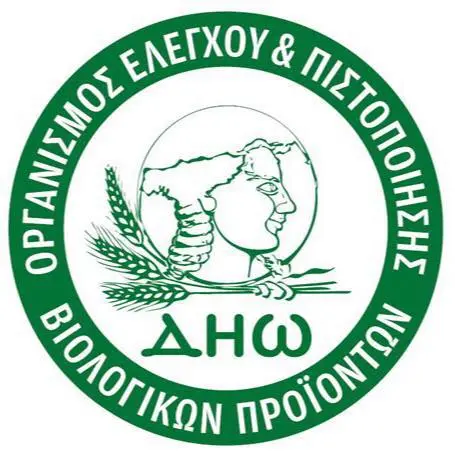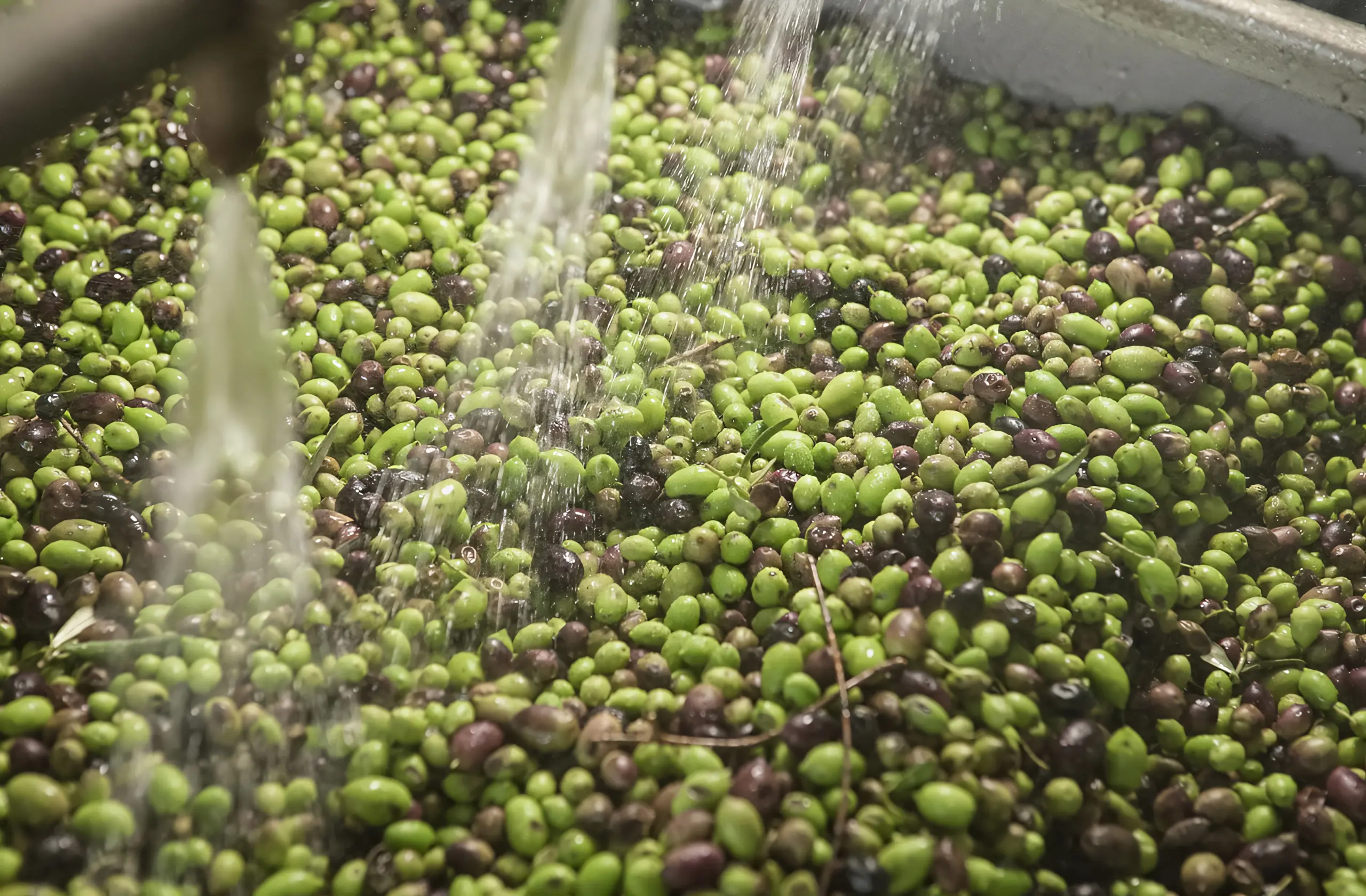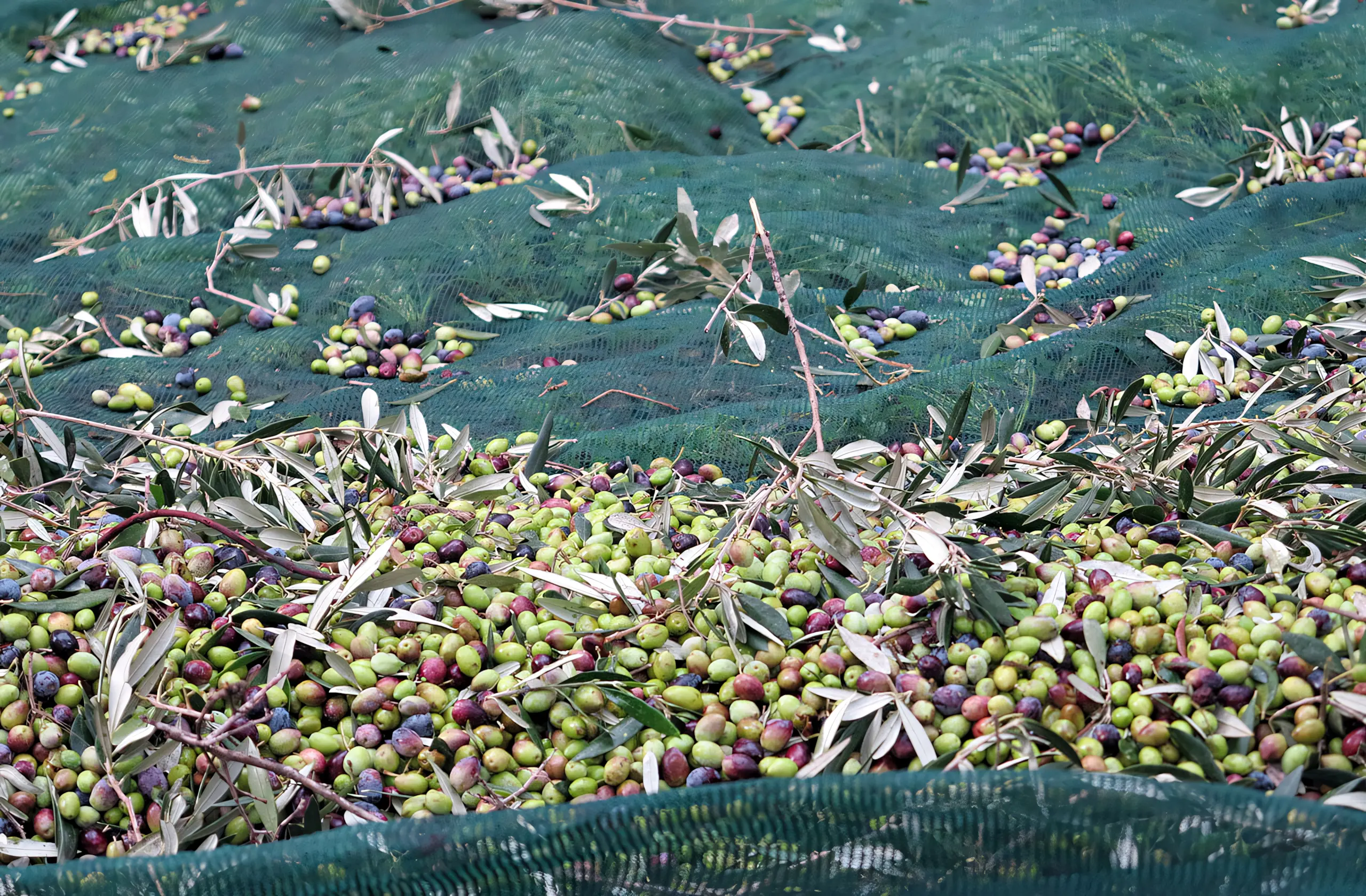Certified since 1994 by DIO, Inspection and Certification Organization of Organic Products.

“Organic farming is challenging; it requires knowledge, education, effort, and people who are seeking something better.”
Mildly Fruity
It’s a delightful mix of taste and aroma from fresh fruit, carefully picked at just the right moment. The fruity scent hits your nose immediately and lingers as you savor the taste.
Slightly Bitter
It has a distinctive flavor that comes from green olives or olives that are just starting to change color. This taste can be particularly delightful, depending on how strong it is.
Pungent
A characteristic flavor of olive oils produced at the beginning of the olive cultivation period mostly from green olives that are still underripe. The pungent flavor is generally considered an advantage that elevates the experience of tasting.
General Characteristics of the Koroneiki Olive Variety
The Koroneiki olive variety, also known by several other names such as Kritiki, Koronia, Koroni, Ladolia, Lianolia, Psilolia, Vatsiki, and Asprolia, is widely distributed across various geographical regions of the country. Specifically, it is cultivated in Messinia, Ilia, Zakynthos, Laconia, Achaia, Aetolia-Acarnania, Kefalonia, Samos, the Cyclades, and Crete.
Significance and Resilience of the Variety
It is a particularly important variety as it is highly productive and resilient in the dry and hot areas of our country. Its requirements for soil, moisture, and cultivation practices are relatively low, and its trees can be cultivated at altitudes of up to 500 meters.
Yield and Fruiting
This variety has consistent fruiting and relatively high yield, ranging from 30 to 100 kilograms of fruit per tree, and can reach up to 150 kilograms of fruit per tree under favorable climatic conditions. It has a strong tendency to bear fruit every other year under adverse conditions, a phenomenon that is limited in irrigated areas and after proper pruning and cultivation practices.
Flowering and Ripening Period
It is an early variety, flowering in mid-April, while the fruit ripening begins early in September and continues until late December.
Oil Characteristics
The Koroneiki variety belongs to the oil-producing varieties. Specifically, the oil content of the fruit is high, ranging from 15-27%. The oil of the Koroneiki variety is distinguished by its excellent aroma and exceptional taste. The main drawback is the small size of the fruit, which makes mechanical harvesting difficult.
Morphological Characteristics
The Koroneiki tree grows to a height of 5-7 meters, but can reach up to 15 meters. The canopy takes on a hemispherical or cup-shaped form. The leaves are lanceolate, dark green, and small, measuring 5.45 cm (±0.52 cm) in length and 1.03 cm (±0.12 cm) in width.
Fruit Characteristics
The fruit has a cylindrical-conical shape, with an average weight of 1.3 g and a small nipple. The fruit color starts green, then fades to a blackish-purple. The pit has a shape similar to the fruit, with one side curved. The flesh-to-pit ratio of the fruit is 3.8:1.
Susceptibility to Diseases
This variety is widespread in the Rethymno region and is susceptible to the Olive Fly (Bactrocera oleae), the Olive Psyllid (Euphyllura olivina), and the Olive Weevil (Rhynchites cribipennis).


The Tsounati cultivar, also known by several other names such as Matsolia, Mastolia, Mouratolia and Mastoeidis, is primarily grown in the prefectures of Laconia, Arcadia (especially in the Megalopoli area), Messinia (notably upper Messinia), Rethymno and Chania. This variety is particularly hardy, capable of withstanding cold temperatures and thriving at altitudes up to 1,000 meters. It does exceptionally well on calcareous soils but is also productive on richer soils and those of medium texture. Renowned for its olive oil production, the Tsounati cultivar boasts fruit with an oil content of up to 25%, which is of very good quality.
The trees of the Tsounati cultivar typically reach heights of 6 to 8 meters. They have large-diameter trunks, and their foliage grows in an irregular shape. The leaves are a light green or gray-green, featuring a trench along the central vein that ends in a small spine. Medium-sized, these leaves measure around 6.18 cm in length and 1.18 cm in width. The fruits of the Tsounati are distinctive—each one is oval, medium-sized, and deep purple, with an average weight of 2.6 grams. They end in a unique mastoid outgrowth with a characteristic papilla. The core of the fruit mirrors this shape, being oval to cylindrical or conical, and weighs about 0.37 grams. The fruit’s pulp-to-core ratio is an impressive 6:1.
Despite its many strengths, the Tsounati cultivar is particularly susceptible to the olive fruit fly (Bactrocera oleae), which can pose a significant challenge for growers.

At Teresa Psillaki’s organic olive grove, the process of harvesting olives and producing oil showcases two remarkable cultivars.
The Koroneiki, which thrives in regions like Crete, the Peloponnese and the Cyclades, is celebrated for its high productivity, robust yields, and resilience. The resulting oil is not only fine in quality but also boasts an exceptional taste. On the other hand, the
Tsounati cultivar, rarer and more ancient, is grown at higher altitudes. This unique variety produces olive oil with a distinct and intriguing flavor.

We use only organic fertilizers that respect the biodiversity of the area to fertilize the trees. Their use is based on a fertilizing and soil analysis plan.

The olives are harvested by workers, who spread out nets under the trees and start hitting the short olive trees using special combs. Only vibrating rods are used for the harvest to prevent any potential damage to the leaves, buds and tender sprouts.


When you enjoy a drop of the Terpsy extra virgin olive oil, you’re tasting not just high-quality oil, but also all the attention and care that went into its creation. It’s our way of bringing a bit of that special process right to your table.

The olive oil is transported to a separate, dark, and cool storage area, where it is kept in stainless steel containers to ensure it remains unspoiled.

After filtering out any remaining small fruit particles and sediment, the olive oil is promptly bottled in specialized metallic containers to preserve its quality and prepare it for transport.